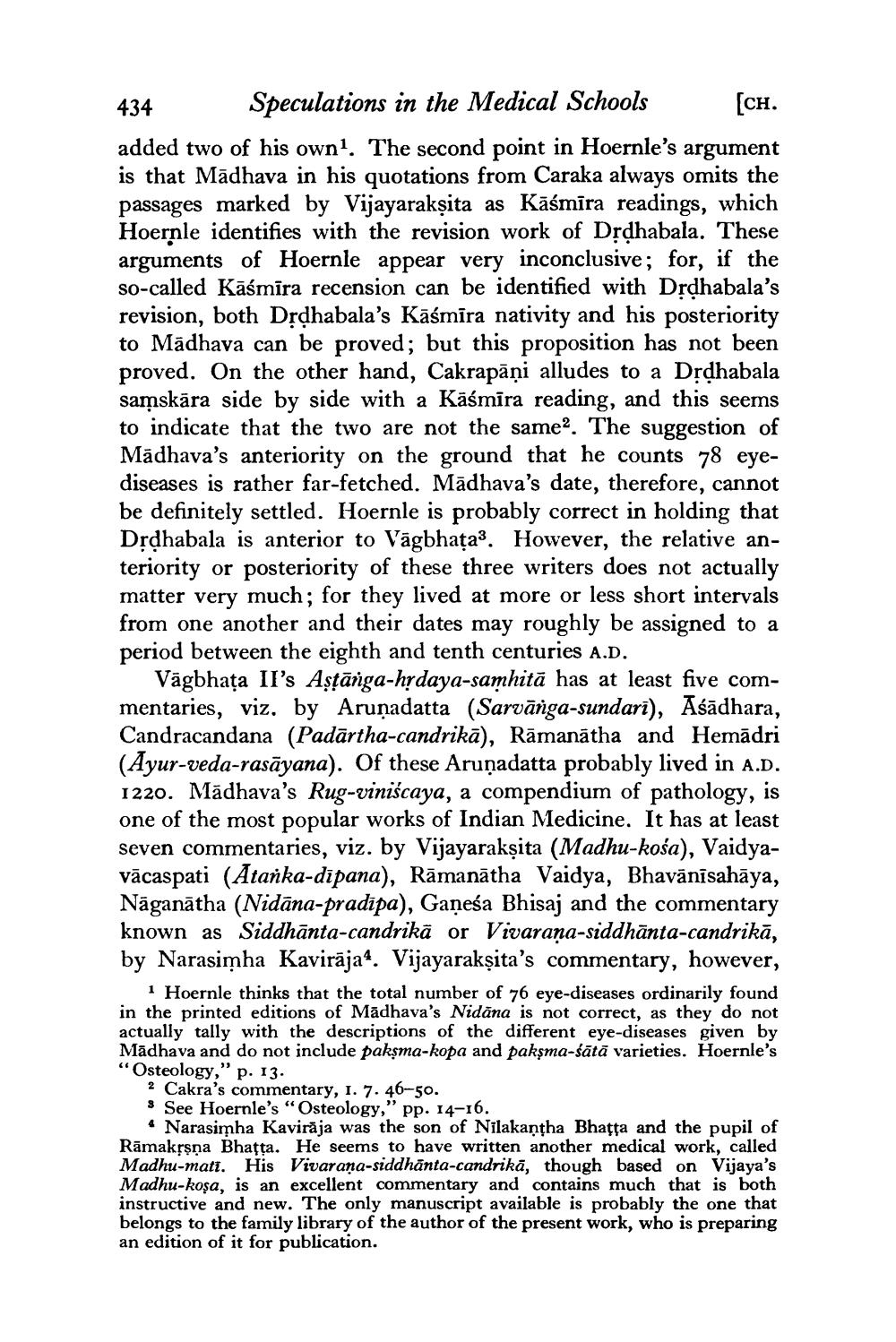________________
434
Speculations in the Medical Schools
(ch.
added two of his own?. The second point in Hoernle's argument is that Madhava in his quotations from Caraka always omits the passages marked by Vijayarakṣita as Kāśmīra readings, which Hoernle identifies with the revision work of Dươhabala. These arguments of Hoernle appear very inconclusive; for, if the so-called Kāśmīra recension can be identified with Drdhabala's revision, both Dườhabala's Kāśmīra nativity and his posteriority to Madhava can be proved; but this proposition has not been proved. On the other hand, Cakrapāņi alludes to a Drdhabala saņskāra side by side with a Káśmira reading, and this seems to indicate that the two are not the same. The suggestion of Madhava's anteriority on the ground that he counts 78 eyediseases is rather far-fetched. Mādhava's date, therefore, cannot be definitely settled. Hoernle is probably correct in holding that Drdhabala is anterior to Vāgbhata3. However, the relative anteriority or posteriority of these three writers does not actually matter very much; for they lived at more or less short intervals from one another and their dates may roughly be assigned to a period between the eighth and tenth centuries A.D.
Vāgbhata II's Astānga-hrdaya-samhită has at least five commentaries, viz. by Aruņadatta (Sarvānga-sundari), Asādhara, Candracandana (Padārtha-candrikā), Rāmanātha and Hemādri (Ayur-veda-rasāyana). Of these Aruņadatta probably lived in A.D. 1220. Mādhava's Rug-viniscaya, a compendium of pathology, is one of the most popular works of Indian Medicine. It has at least seven commentaries, viz. by Vijayarakṣita (Madhu-kośa), Vaidyavācaspati (Atanka-dīpana), Rāmanātha Vaidya, Bhavānīsahāya, Nāganātha (Nidāna-pradīpa), Gaņeśa Bhisaj and the commentary known as Siddhānta-candrikā or Vivarana-siddhānta-candrikā, by Narasimha Kavirāja4. Vijayarakṣita's commentary, however,
Hoernle thinks that the total number of 76 eye-diseases ordinarily found in the printed editions of Mādhava's Nidāna is not correct, as they do not actually tally with the descriptions of the different eye-diseases given by Mādhava and do not include pakşma-kopa and pakşma-śātā varieties. Hoernle's “Osteology," p. 13.
2 Cakra's commentary, 1. 7. 46-50. 3 See Hoernle's “Osteology," pp. 14-16.
4 Narasimha Kavirăja was the son of Nilakantha Bhatta and the pupil of Rāmakrsna Bhatta. He seems to have written another medical work, called Madhu-mati. His Vivarana-siddhānta-candrikā, though based on Vijaya's Madhu-kosa, is an excellent commentary and contains much that is both instructive and new. The only manuscript available is probably the one that belongs to the family library of the author of the present work, who is preparing an edition of it for publication.
the son of Nitten another medised on Vijaya;




